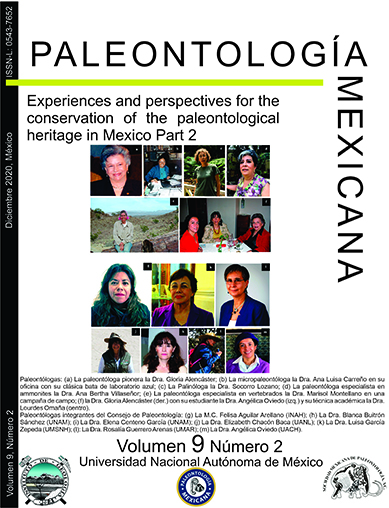Experiences and perspectives for the conservation of the paleontological heritage in Mexico – Part 2
Main Article Content
Abstract
From the middle of the 20th century the paleontological heritage is at risk. Anthropic activities linked to economic development such as construction, industrialization, vandalism, the continuous collection of fossils by professionals and amateurs and commercial purposes are accelerating this heritage's destruction and disappearance (Lipps, 2009; Aguilar Arellano, 2020). Different strategies for the protection and conservation of paleontological remains and their localities have been developed to solve these problems. The association of scientific research and education, recreation and tourism are part of the search for solutions to these problems. Another essential aspect to consider is the existence of laws and the institutions responsible for them, including the paleontological heritage. However, the scientific community remains concerned about an irreparable loss of this evidence for future generations if we consider that there is still much to discover, describe, and make known.
Article Details

This work is licensed under a Creative Commons Attribution-NonCommercial-NoDerivatives 4.0 International License.
References
Aguilar Arellano, F.J., 2019, Reactivación del Consejo de Paleontología, en Sánchez Nava, P.F. (coord.), La arqueología mexicana, a principios del siglo XXI: estudios de caso: México, Secretaría de Cultura, Instituto Nacional de Antropología e Historia, Publicación electrónica, s/p.
Aguilar Arellano, F.J., 2020, La protección del patrimonio paleontológico en México: Morelos, México, El Tlacuache, Suplemento Cultural del Centro INAH Morelos, 957, 1−8. available at: [https://www.inah.gob.mx/images/otros/20201031_tlacuache_957.pdf], consultado diciembre 2020.
Lipps, J.H., 2009, PaleoParks: our paleontological heritage protected and conserved in the field worldwide: Carnét de Géologie / Notebooks on Geology, Book 2009/03, 1−10.
